Updated 1-4-24
Living in the northeast, we don’t usually experience a shortage of rain. So why bother harvesting rainwater you might ask?
As the Washington Post reminded us this week in their report, capturing rainwater isn’t just about saving water for potential droughts. Capturing rainwater — and using it for tasks such as watering the garden or landscape, topping off water features, washing the car, etc. — has some major benefits that should be very dear to the hearts of Long Islanders.
When rainwater rushes along our roads and byways into sewers, it picks up contaminants along the way. By the time it makes it to our waterways, The rainwater is not healthy and is deposited where swimming, surfing, boating and other water sports are a passion for many.
But when homeowners capture and use rainwater, it stops a lot of that runoff from flooding or carrying pollutants into natural bodies of water, says the Washington Post. This helps avoid flooding as well.’
Average Homeowner Water Use
Did you know that according to statistics the “average” homeowner uses approximately 3,000 gallons of water weekly with about 70% used outdoors?
And have you considered that freely available rainwater does not soak into asphalt and concrete for us to capture, but, instead, flows away, picking up contaminants as it goes, on into over-burdened sewer systems (and hence on into our area waterways)?
Well, this runoff is not just water over the dam, if it highlights how valuable rainwater is to us as an, albeit, neglected, but available precious resource. The trick is: how to keep the rain where it falls to be reused.

Rain Runoff: Instead of being just runoff as pictured here, the trick is to capture rain where it falls to be reused.
 Harvesting rainwater is not a new idea. People have been collecting it for generations, frequently storing it in rain barrels.
Harvesting rainwater is not a new idea. People have been collecting it for generations, frequently storing it in rain barrels.
And this is still a viable method. But there’s a lot more that can be done with falling rain than saving small amounts in unattractive above-ground containers.
Through our Rainwater Harvesting Group, Deck and Patio specializes in installing rainwater harvesting systems that capture rainwater as part of a complete self-sustaining eco-system.
Captured, filtered and recirculated rainwater, in sufficient amounts to supply attractive water features, work together with carefully chosen plants, fish, rocks and gravel, to maintain a balanced system for long-term sustainability.
Using Aquascape’s RainXchange, and sometimes permeable pavers as pictured here, today’s rainwater harvesting systems capture sufficient rainwater to also wash your car and/or hose down the deck and patio. And when you consider that local Long island water companies frequently charge an incremental rate, based on the amount of water used, capturing all the non-ingestive water you need from rainfall, the lower your rate will be.
For this project, four downspouts collects about three quarters of the clients’ roof runoff, which goes through containers with filters to screen out twigs and small debris before sending the rainwater down into the reservoir for reuse in irrigation and to top off a backyard pond when needed.
This water feature by Deck and Patio includes a stream and multiple waterfalls — all recirculated through the same RainXchange water collection system. City water is not used. Such a feature attracts desirable wildlife such as frogs, butterflies, birds etc. creating one’s own wildlife refuge.

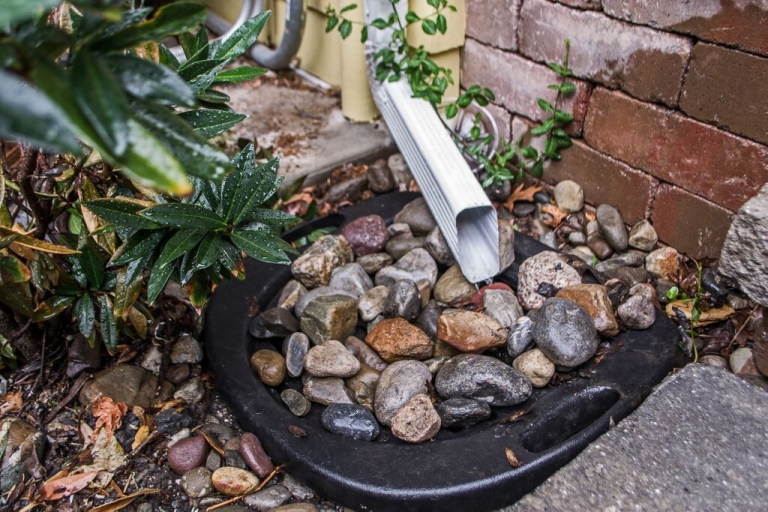

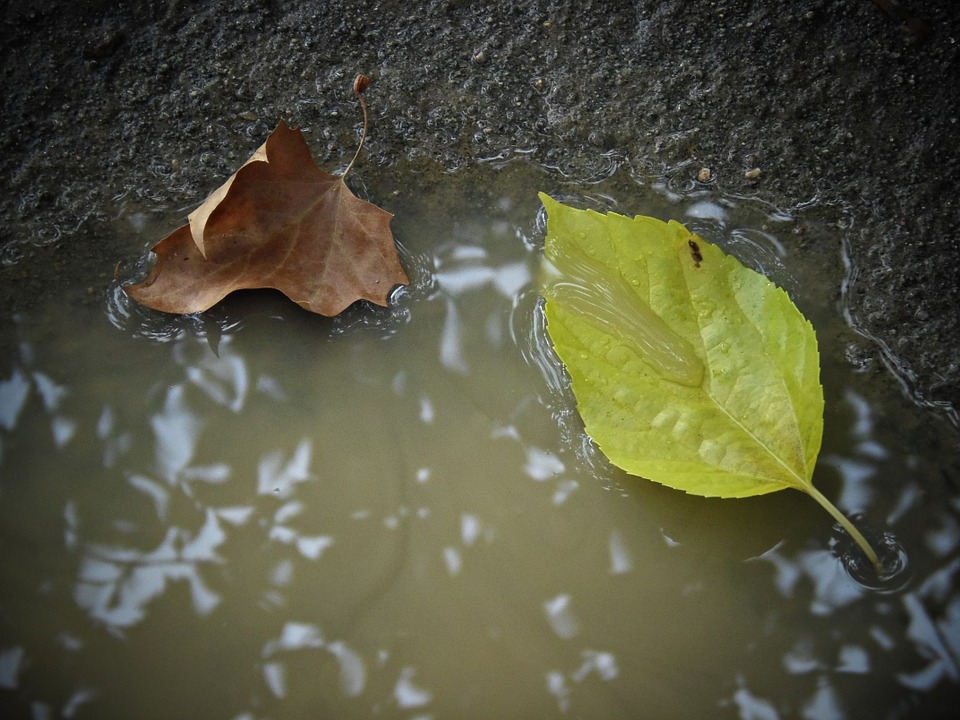


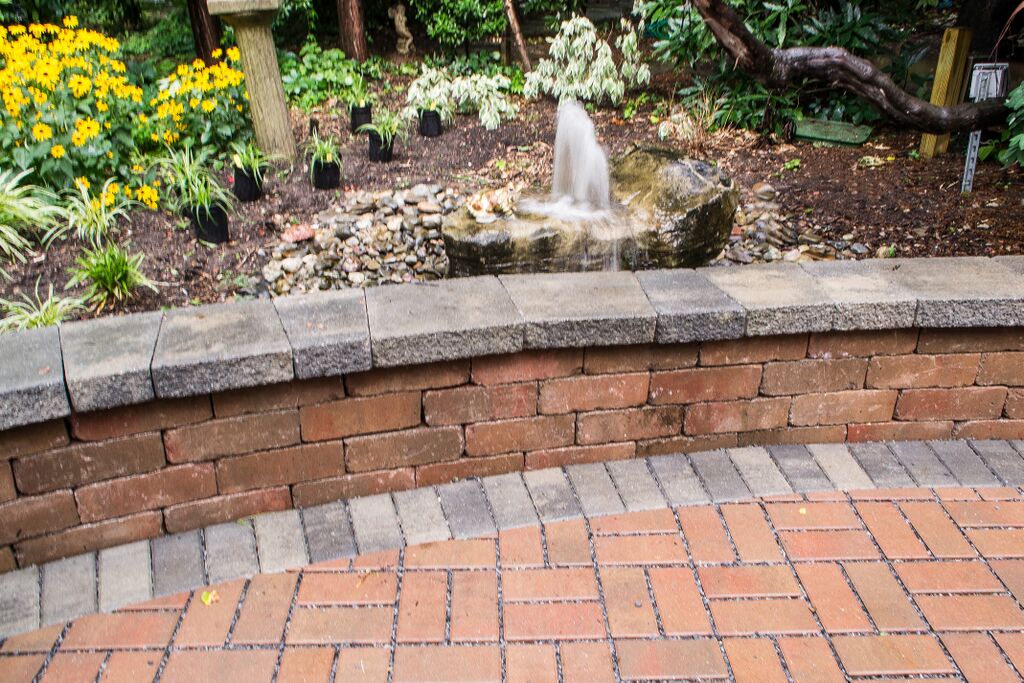
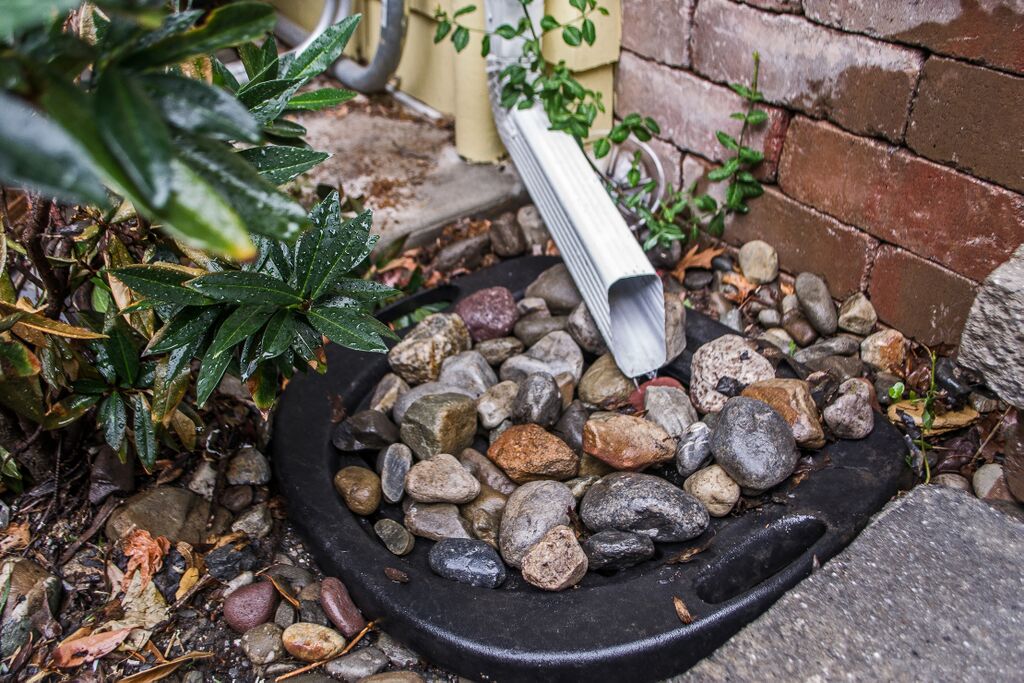

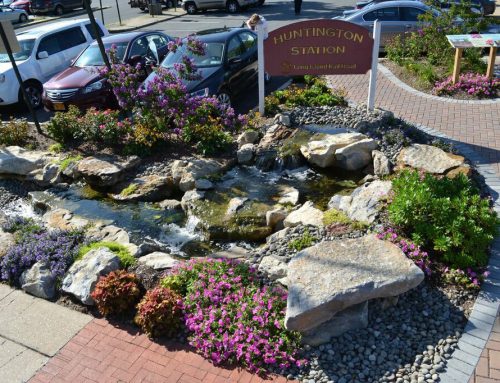




[…] RainXchange, runoff rainwater — either from a roof or permeable pavers — is collected to maintain the water feature’s system through completely […]